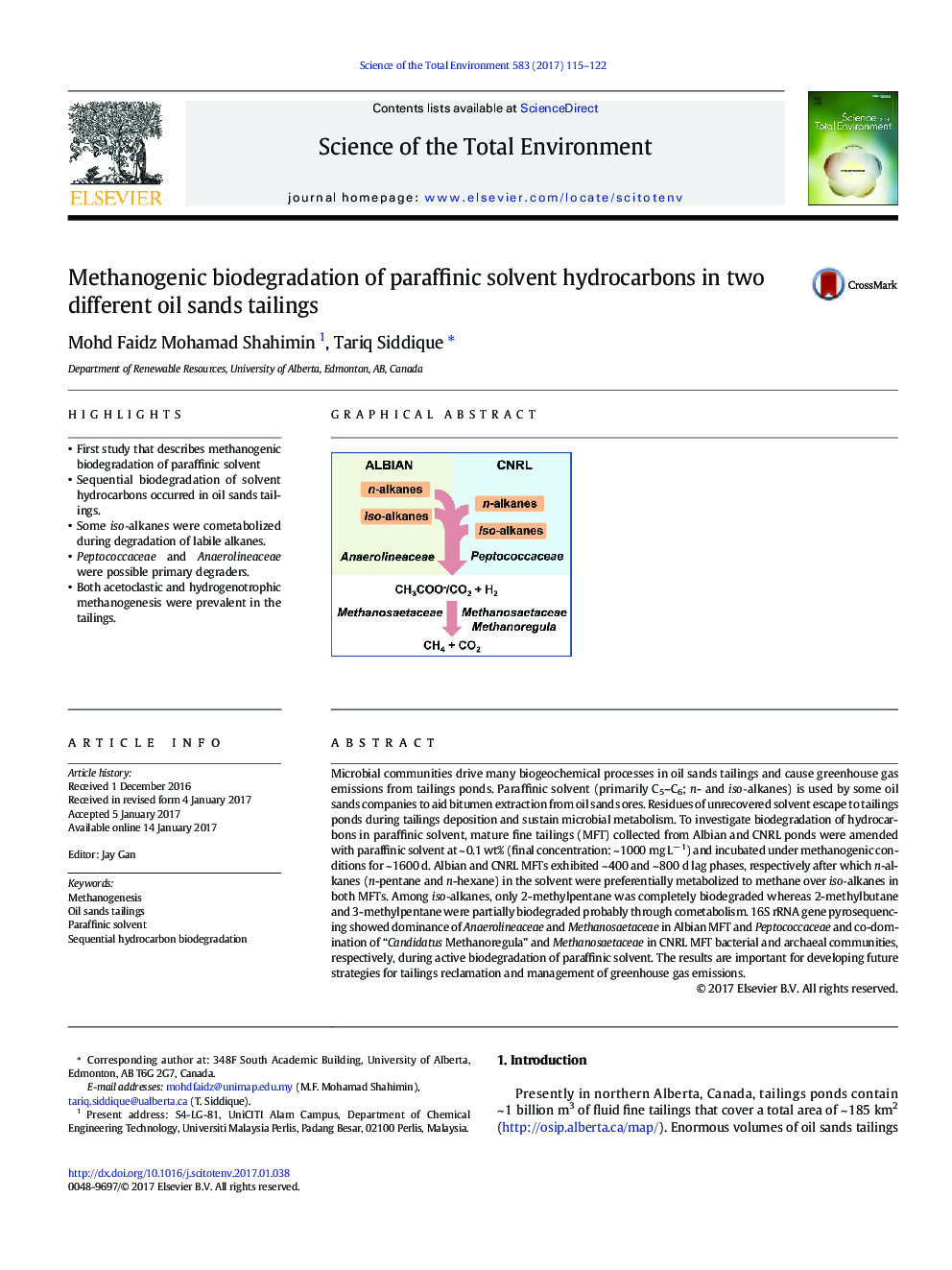| کد مقاله | کد نشریه | سال انتشار | مقاله انگلیسی | نسخه تمام متن |
|---|---|---|---|---|
| 5751213 | 1619709 | 2017 | 8 صفحه PDF | دانلود رایگان |
- First study that describes methanogenic biodegradation of paraffinic solvent
- Sequential biodegradation of solvent hydrocarbons occurred in oil sands tailings.
- Some isoâalkanes were cometabolized during degradation of labile alkanes.
- Peptococcaceae and Anaerolineaceae were possible primary degraders.
- Both acetoclastic and hydrogenotrophic methanogenesis were prevalent in the tailings.
Microbial communities drive many biogeochemical processes in oil sands tailings and cause greenhouse gas emissions from tailings ponds. Paraffinic solvent (primarily C5-C6; n- and isoâalkanes) is used by some oil sands companies to aid bitumen extraction from oil sands ores. Residues of unrecovered solvent escape to tailings ponds during tailings deposition and sustain microbial metabolism. To investigate biodegradation of hydrocarbons in paraffinic solvent, mature fine tailings (MFT) collected from Albian and CNRL ponds were amended with paraffinic solvent at ~ 0.1 wt% (final concentration: ~ 1000 mg Lâ 1) and incubated under methanogenic conditions for ~ 1600 d. Albian and CNRL MFTs exhibited ~ 400 and ~ 800 d lag phases, respectively after which n-alkanes (n-pentane and n-hexane) in the solvent were preferentially metabolized to methane over isoâalkanes in both MFTs. Among isoâalkanes, only 2-methylpentane was completely biodegraded whereas 2-methylbutane and 3-methylpentane were partially biodegraded probably through cometabolism. 16S rRNA gene pyrosequencing showed dominance of Anaerolineaceae and Methanosaetaceae in Albian MFT and Peptococcaceae and co-domination of “Candidatus Methanoregula” and Methanosaetaceae in CNRL MFT bacterial and archaeal communities, respectively, during active biodegradation of paraffinic solvent. The results are important for developing future strategies for tailings reclamation and management of greenhouse gas emissions.
147
Journal: Science of The Total Environment - Volume 583, 1 April 2017, Pages 115-122
